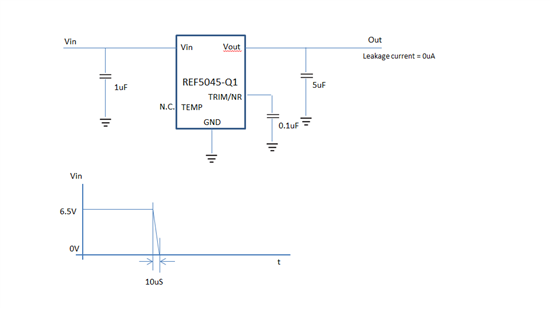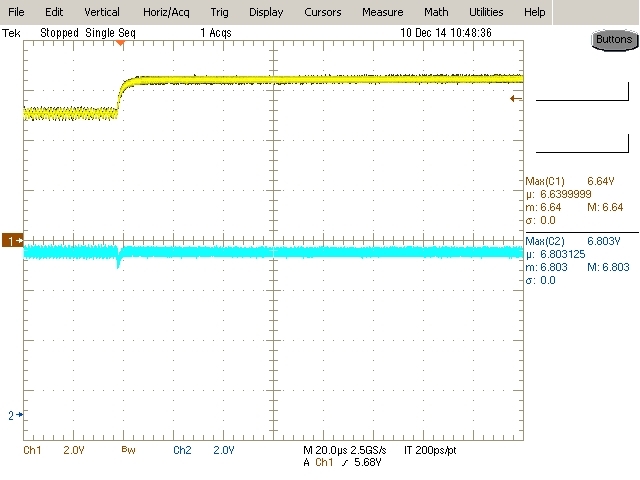Dear, All
It is a question about 'Vout pin' of REF5045-Q1.
At the time of abnormalities, the seal of approval of the negative voltage may be carried out to 'Vout pin' from the exterior.
It is indicated as '30 mA' to the absolute-maximum-rating value of 'Vout pin'.
Does this mean that it is satisfactory if a current value is '30 mA' regardless of the impressed electromotive force to Vout?
Or is there any minimum voltage of negative voltage?
In a certain case, please let me know the voltage.
Thanks, Masami M.





